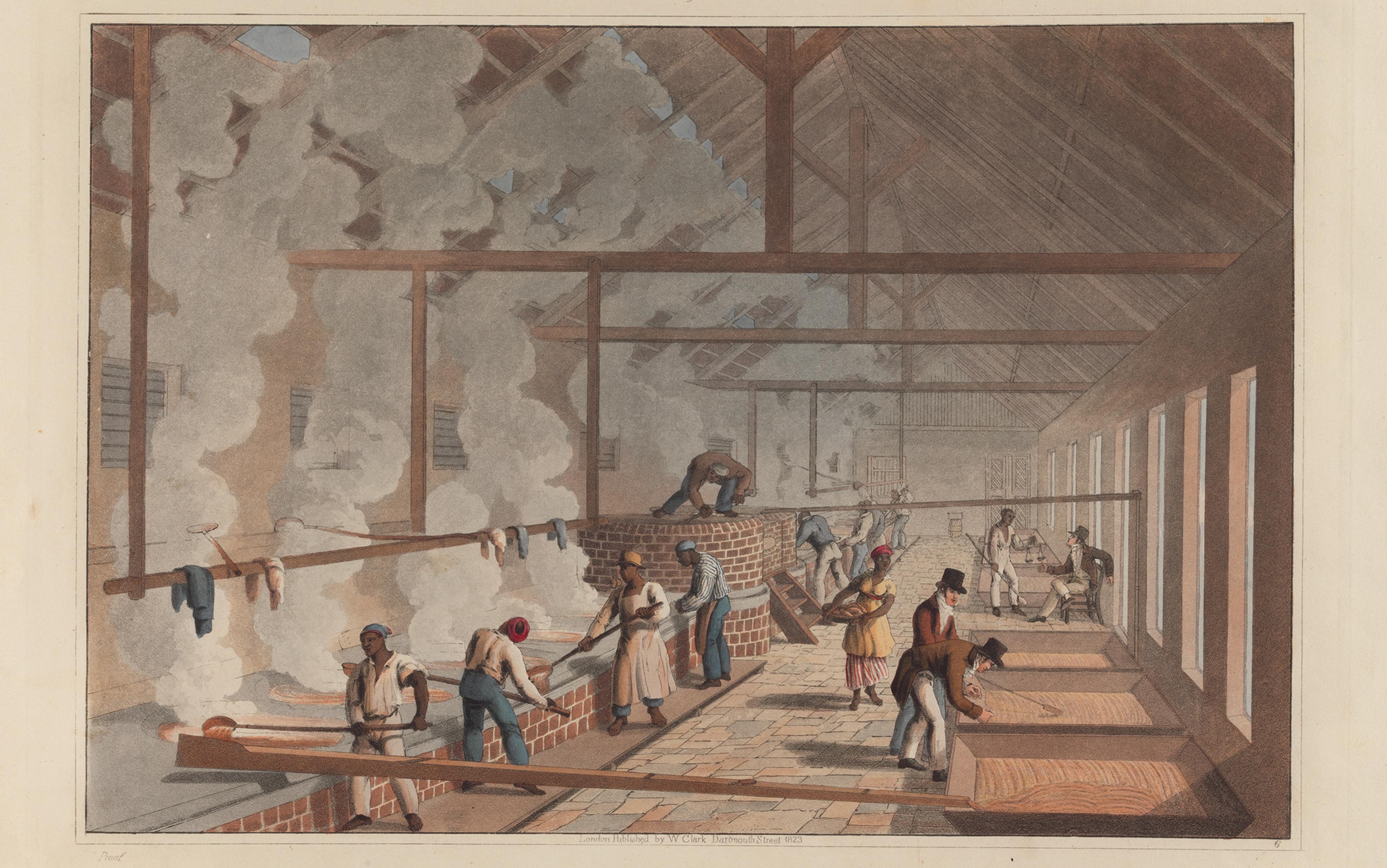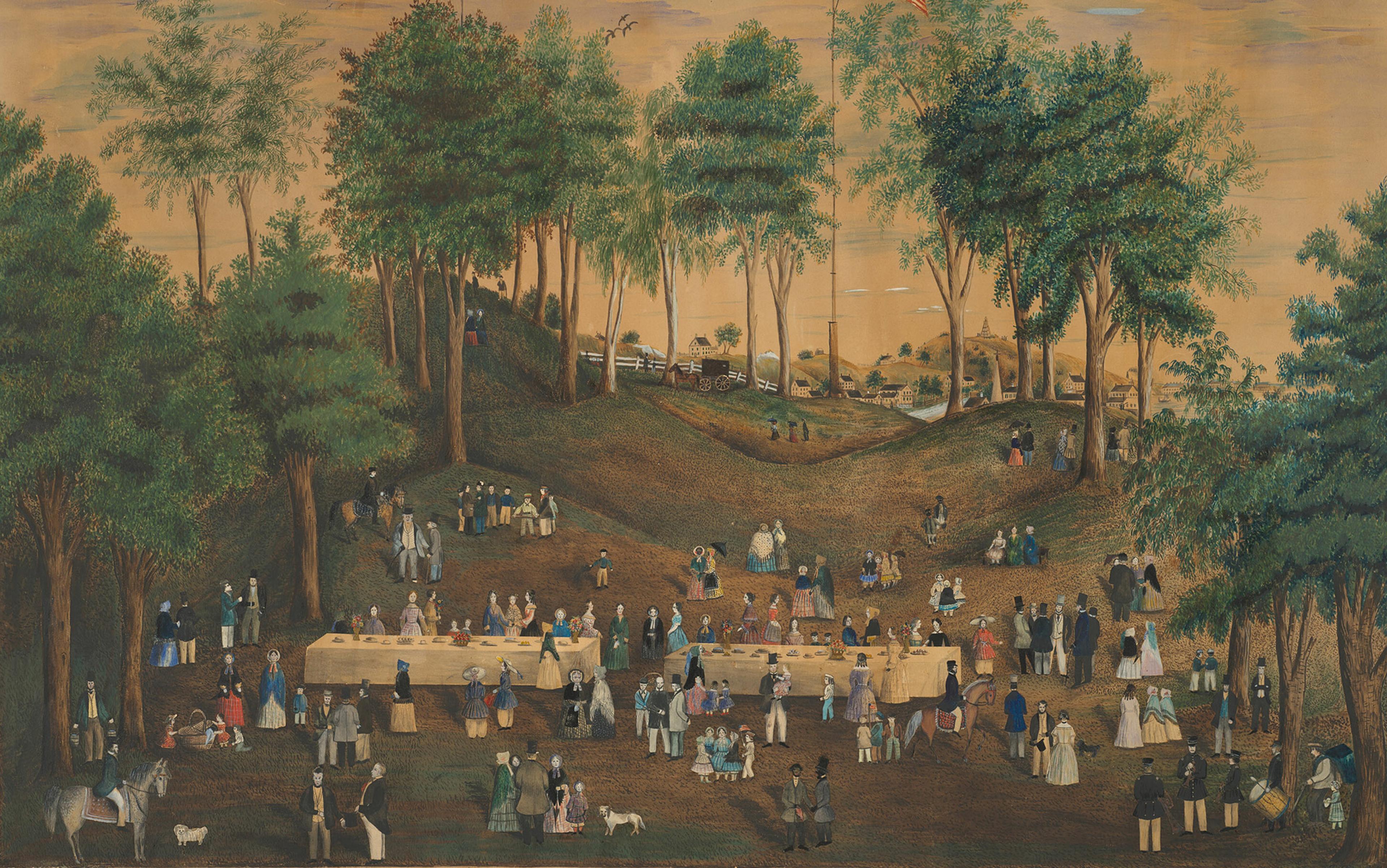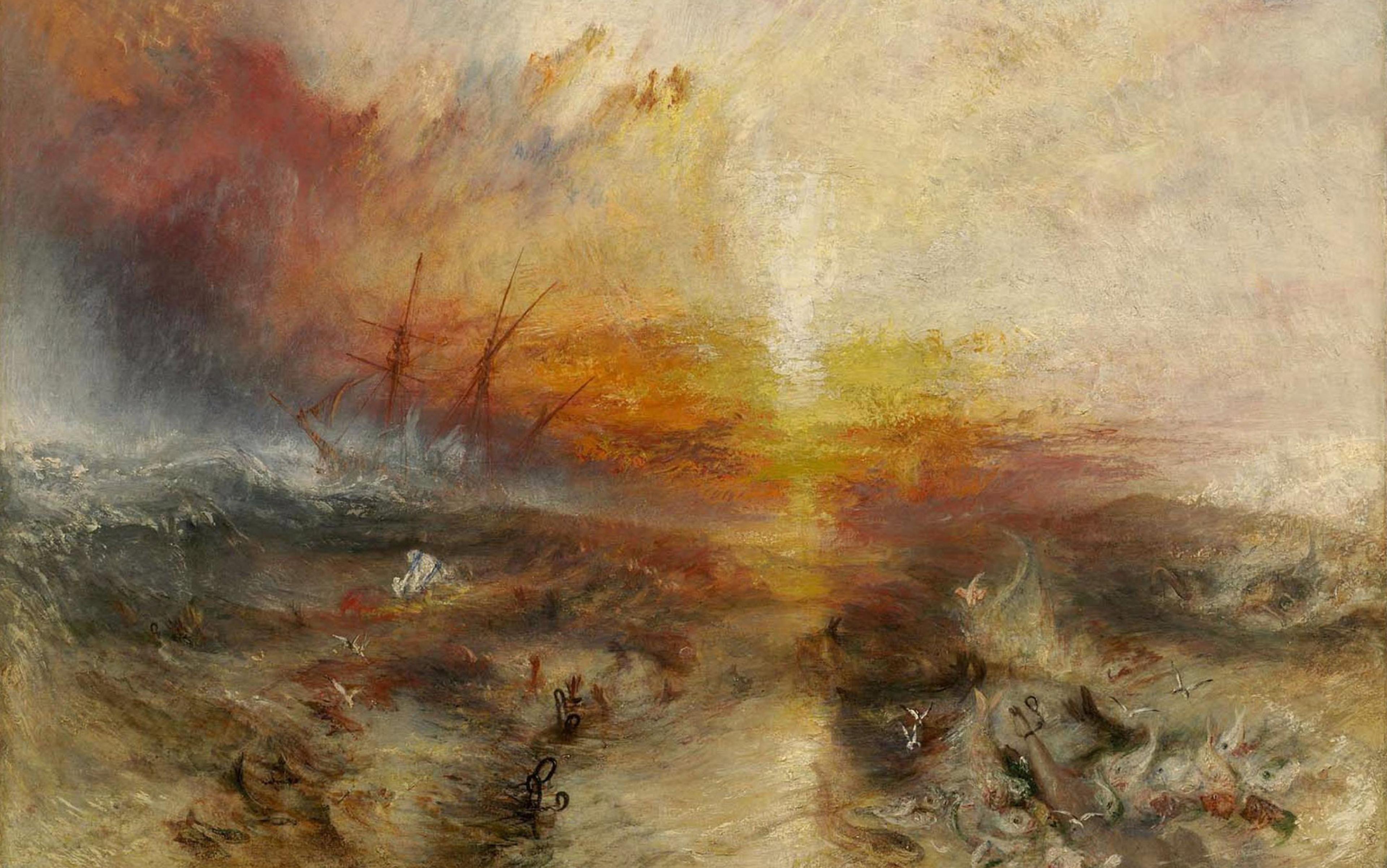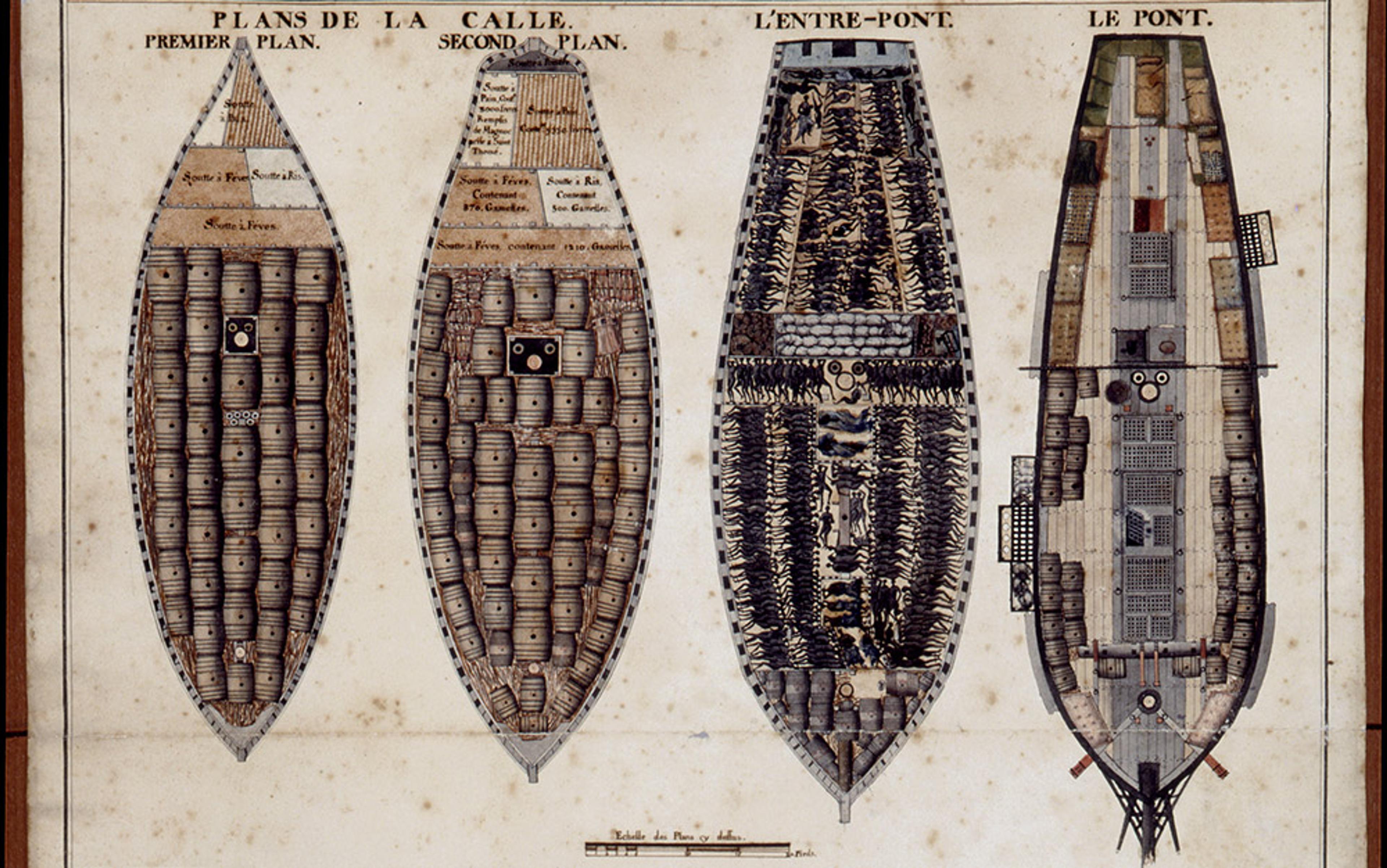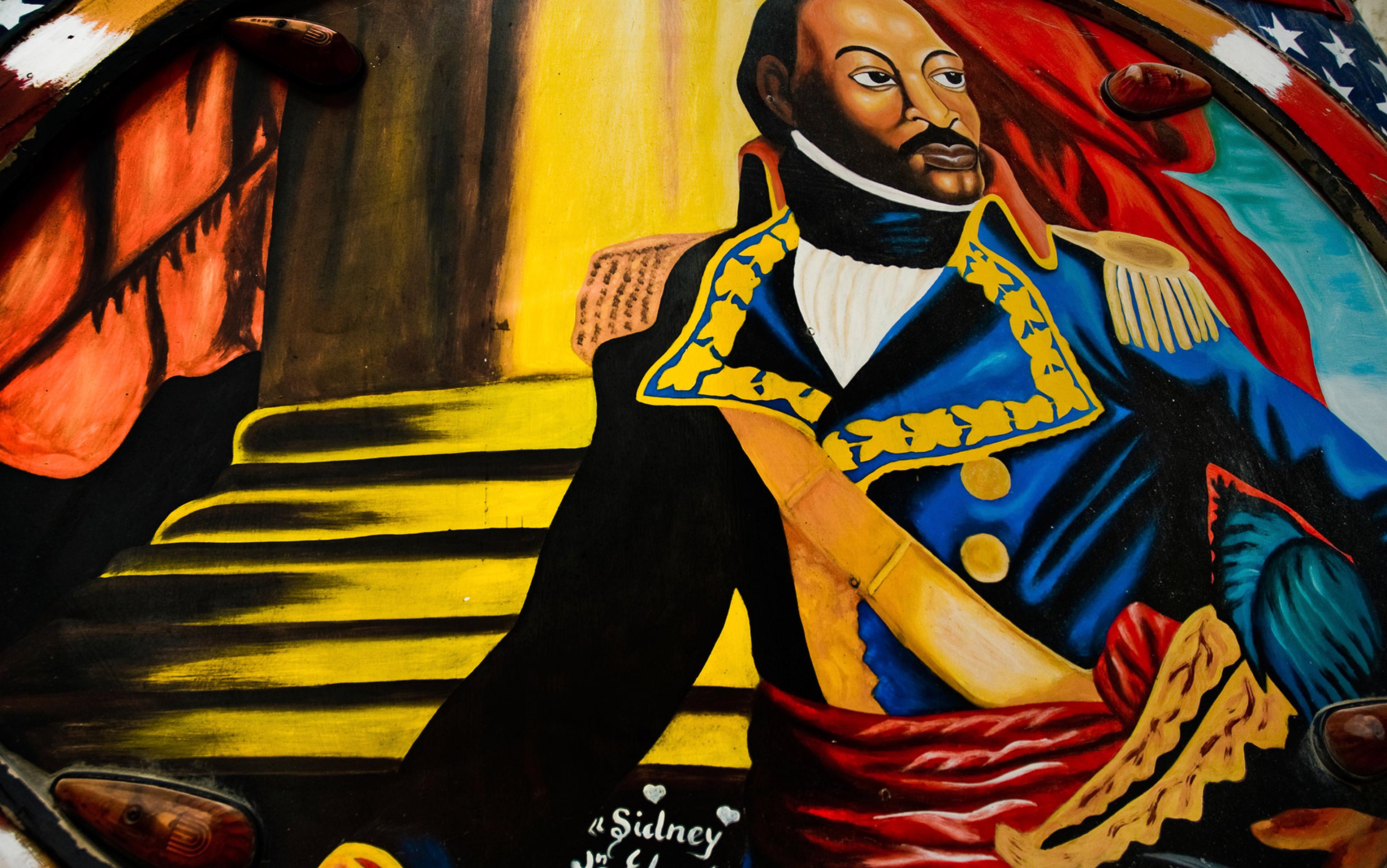Britain ended its slave trade in 1807, and abolished slavery in much of its colonial empire in 1834. Four years later, Queen Victoria was crowned. For British liberals, the timing was auspicious, and the lessons were obvious. The 18th-century empire of enslaved labour, rebellious colonies and benighted protectionism had been purified by the ‘sacrifice’ of the profits of slavery to the principles of free trade, free labour and free markets. But the empire that slavery made endured.
Although individual enslaved people were often brought to Britain by the people who claimed to own them, for most Britons, mass enslavement was something that happened ‘over there’ – in the colonies, especially the sugar-producing islands of the Caribbean. This fact of geography shaped British antislavery. The ‘mother country’ could also be the stern but benignant ‘father’, correcting children in the ‘infant colonies’. In the slave colonies, opposition to slavery could be a revolutionary threat to the social order. In Britain, antislavery affirmed Britain’s superior virtue in relationship to its empire.
This contented patriotism was a feature of British antislavery, decades before the leaders of the movement succeeded in securing the abolition of the slave trade. In 1785, William Cowper published ‘The Task’, a long poem in blank verse. In Book II, Cowper celebrates Somerset v Stewart, the 1772 case that set a precedent for enslaved people from Britain’s colonies to sue for freedom in metropolitan courts. He wrote:
Slaves cannot breathe in England; if their lungs
Receive our air, that moment they are free
They touch our country and their shackles fall.
That is noble, and bespeaks a nation proud
And jealous of the blessing. Spread it then,
And let it circulate through every vein
Of all your empire; that where Britain’s power
Is felt, mankind may feel her mercy too.
William Wilberforce, the leader in Parliament of the campaign to abolish the British slave trade, admired Cowper’s eye for evidence of Providence. He was his favourite poet. For both men, antislavery confirmed Britain’s special place in human and divine affairs. To Wilberforce, slavery kept an enslaved person from choosing salvation. Consequently, to enslave was a terrible sin. Emancipation, however, did not imply independence. Social hierarchy was natural, and therefore desirable. Virtue flowed downhill from the powerful to the weak, the rich to the poor, Britain to the colonies. Wilberforce assumed that Britain would hold the interests of freedpeople in trust during a long journey toward civilisation. What greater proof of advanced civilisation could a nation offer than opposition to slavery?
For Cowper and Wilberforce, Britain was exceptional – and in historical memory, the antislavery movement is still offered as evidence of British exceptionalism. For conservative Eurosceptics such as the Oxford theologian Nigel Biggar, antislavery is the antidote to criticism of empire. ‘Between the slave-trade and slavery of the 18th century and the present,’ Biggar writes in a widely circulated recent essay for the group Briefings for Britain, ‘lies 150 years of imperial penance …’ With his talk of penance and his totting-up of the ‘gifts’ given by empire – English, railroads, parliaments, property rights – Biggar performs a mawkish pageant of the pith helmet, the Bible and the flag. Antislavery, from this point of view, symbolises Britain’s moral awakening and special destiny, first and greatest among the European empires.
In the United States, a similar caricature of British antislavery as especially precocious and virtuous has become a useful foil for reimagining American history, in The New York Times’s 1619 Project and elsewhere. If slavery is the American ‘original sin’, and the preservation of slavery was a cause of the American Revolution, British antislavery becomes an avenging force driven out of the new United States. And yet, when white Virginia colonists first purchased enslaved African workers to cultivate tobacco in 1619, the colonists thought of themselves as English. They looked south to Spain and Portugal’s colonies, where plantation slavery was well-established, and hoped to make a fortune. To the colonists, hierarchy was natural and defined by God. Coerced, enserfed or enslaved labour was unremarkable – and, from the colonists’ perspective, necessary – gentlemen, by definition, did not work in the fields. The sins weren’t original, and they weren’t ‘American’.
The Caribbean, not the colonies that became the American South, was the focus of debate for supporters and opponents of slavery in the British Empire. During the nearly three centuries of the transatlantic slave trade, more than 2.3 million enslaved people disembarked in Britain’s Caribbean colonies, compared with roughly 390,000 in the Thirteen Colonies and the US. In 1783, Britain lost the Thirteen Colonies, but retained more than a dozen sugar-producing colonies in the Caribbean. After the disruption of the Revolutionary War, colonists in the Caribbean resumed importing nearly everything, from barrel staves to livestock, from the US and Britain. Sugar was so profitable that one British slaveholder claimed that an acre planted with sugarcane would yield enough sugar to buy and import five acres’ worth of grain.
Despite geographic affinities and deep commercial relationships with the North American colonies in rebellion, the Caribbean colonies remained a part of the British Empire. The white planters who dominated the British Caribbean had strong incentives for loyalty. The Navigation Acts, which governed imperial trade, guaranteed them a protected market for their sugar in Britain. The Acts also barred the often cheaper and higher-quality sugar produced in other European plantation colonies, especially the French colony of Saint-Domingue, overthrown by the Haitian Revolution (1791-1804). Moreover, unlike most American colonists, Caribbean planters generally thought of Britain as home. Wealthy colonists bought property in Britain, invested in British firms, and sent their children away to British boarding schools. The West Indian ‘interest’ in British politics, while far from unified, resisted attempts in Parliament even to regulate either the slave trade or enslaved labour. The British slave trade survived for nearly a quarter-century after American independence, British colonial slavery as long again, ending half a century after US independence.
The antislavery movement, like the West India interest, was not unified. It grew from many roots during the 18th century. Among economic theorists, the idea that enslaved labour was more expensive than wage labour became an axiom of imperial political economy. Among British Quakers and among the growing community of Evangelical Protestants, inside and outside the Church of England, slavery – long tolerated in Christian theology – became an obstacle to orderly religious communion and to evangelism. For Enlightened intellectuals interested in comparing Britain to Rome, slavery was culturally backward – an obstacle to imperial consolidation and a symbol of barbarism. For Britons increasingly sensitive to torture and corporal punishment – common in public spaces in Britain for much of the 18th century – the disgusting conditions and violence endured by the enslaved became shocking and intolerable to contemplate. For a growing middle class, and especially for middle-class women, otherwise excluded from most of political life, antislavery was a means to influence policy. After the American Revolution, a new generation of British politicians hoped to tighten and centralise control over Britain’s remaining colonies. Finally, after the Haitian Revolution, the threat of a successful rebellion overthrowing slavery made the prospect of a slow, managed transition to freedom appealing.
There is a common thread connecting these disparate political, cultural and intellectual movements that coalesced into popular antislavery in Britain: all flowed from the growth of the 18th-century empire. The prosperity and expansion that slavery made possible in the British Empire also helped to make antislavery a powerful, if inchoate, part of British culture. Empire raised British consciousness against slavery. At the same time, antislavery presumed British power and superiority – abolishing slavery would prove that Britain was modern, enlightened and fit to govern its empire. Antislavery in Britain was not a threat to empire; empire gave it shape and impetus.
When the 1807 Slave Trade Act passed, Britain was at war with Napoleonic France. Ending the slave trade was a way gradually to reform the Caribbean colonies, and to prevent a revolution like Haiti’s, as well as a reason to attack and search neutral shipping to look for enslaved people aboard. The Act was a triumph for the antislavery cause, but it was also part of the war effort. Henry Thornton, a Member of Parliament (MP) and a close ally of Wilberforce, saw the Act as proof that Britain was a new Rome. ‘Civilisation,’ Thornton said in the House of Commons, ‘has always been promoted in the world chiefly by the communication of light from a civilised to a barbarous people.’ Imperial power carried new responsibilities. ‘Ought we not generally to prevent man from preying upon man?’ Thornton asked. ‘[W]e profess to act on higher principles than other countries.’
The emancipation that Parliament granted in 1833 was not what enslaved rebels fought for
After 1807, antislavery leaders assumed that ‘natural’ economic laws would erode Caribbean slavery. Without a supply of enslaved labour, slaveholders would need gradually to improve living and working conditions on plantations until slavery gradually disappeared. ‘I am not afraid,’ Wilberforce had told the House of Commons in 1792, ‘of being told I design to emancipate the slaves.’ However, he continued, ‘True Liberty is the child of Reason and of Order; it is indeed a plant of celestial growth, but the soil must be prepared for its reception.’ After the end of the slave trade, enslaved people would learn to be wage workers; slaveholders would learn to be employers. In antislavery rhetoric, absentee slaveholders, because they lived in genteel houses in Britain and patronised the same charities and institutions as leading abolitionists, could be partners in this project of ‘ameliorating’ the conditions of enslaved labour. If absentees returned to the Caribbean as patrician landlords, they would be unable to resist the decline of slavery, and might also help to rehabilitate a British agricultural aristocracy that seemed in decline. ‘Now the legitimate and rightful lord,’ Cowper had mourned, in a passage about the sale of old aristocratic acres in Britain, ‘is but a transient guest, newly arrived.’
Some wealthy slaveholders shared this vision of themselves as patricians. Bryan Edwards, slaveholder, MP and historian of the Caribbean, believed that slavery was necessary to empire, but that it should be reformed. He thought of himself as a father to the people he claimed to own and, as an MP, led a movement to repeal colonial laws that allowed enslaved people to be sold to pay off debts, a common reason for family separations. He restricted the use of corporal punishment on his plantations. There was little daylight between Edwards and Joshua Steele, an obscure Barbados planter who experimented on his plantation with a scheme to convert enslaved labourers into semi-indentured tenants. Thomas Clarkson, a prominent antislavery campaigner, compared Steele to Toussaint Louverture, the Haitian revolutionary hero. They were, he wrote, ‘two great men, quite unknown to each other; one of whom (Mr Steele) was concerned in preparing Negro-slaves for freedom, and the other (Toussaint) in devising the best mode of managing them after they had been suddenly made free.’ To 19th-century eyes, the distinctions among ‘progressive’ planters, antislavery activists and even revolutionary leaders could easily blur.
But ‘amelioration’ did not end slavery. Colonial legislatures resisted amelioration. Enslaved people – like the rebels who fought against colonial militias and British troops in Barbados in 1816, in Demerara (later part of British Guiana) in 1823 and in Jamaica in 1831 and 1832 – forced emancipation on to the Parliamentary agenda, but the emancipation that Parliament granted in 1833 was not what enslaved rebels fought for. Unlike emancipation in Haiti or the US, won through armed struggle and secured with radical constitutional settlements, the end of slavery in the British Empire happened by Act of Parliament, to public acclaim. On 1 August 1834, the hundreds of thousands of enslaved people in the British colonial empire were free, but most passed from slavery into ‘apprenticeship’ for four more years of forced labour.

Cane cutters in Jamaica, photographer unknown, c1880. One of the earliest photographic records of sugar plantations in the Caribbean. Photo courtesy the National Maritime Museum Greenwich/Wikipedia
Apprenticeship was designed as education, a way to teach freedpeople how to accept, save and appropriately spend wages. Steady work and deference to authority were evidence of civilisation. Apprenticeship also helped to reconcile the mostly hostile legislatures of the Caribbean colonies to an unwelcome, though not unexpected, transformation imposed from London. In 1825, a former colonist from the Caribbean, T S Winn, praised Haiti for its success in increasing ‘knowledge, civilisation, and prosperity’ after the Revolution ‘without any White supremacy or superintendence; a disadvantage our West India colonies need not be subjected to.’ It was one of the first times the phrase ‘white supremacy’ appeared in print in Britain – not as criticism, but as the cornerstone of emancipation policy.
To make former slaveholders whole, the Treasury raised a fund of £20 million, a substantial portion of which landed on the balance sheets of the wealthiest of the slaveholding class. Apprenticeship and compensation infuriated many who would later found or become rank-and-file members of the Anti-Slavery Society, the largest advocacy group for the cause in Britain. The leaders of the Society, however, understood that the government might choose to withdraw the legislation entirely unless both provisions were a part of the final Act. By this time, Thomas Fowell Buxton, the MP hand-picked by Wilberforce as his successor in Parliament, had talked himself into supporting compensation. He was certain that the British public would not, as it would soon be said, ‘think £20 million, or, indeed, any sum, too great a sacrifice for the achievement of such mighty objects as these.’ On 29 July 1833, Wilberforce died. On 31 July 1833, Fowell Buxton told the House of Commons that it had been Wilberforce’s dying wish ‘to see the day when England consented to give £20 million for the abolition of slavery!’ The Bill passed its reading and went to the Lords, who amended the legislation to begin emancipation on 1 August 1834, rather than 1 June; 1 August was the usual end of the sugar-planting season.
The 1833 Act was in the slipstream of public opinion – voiced in mass meetings, petitions and pamphlets – and was widely celebrated. ‘The national heart seemed on fire,’ one Antiguan colonist remembered. But popular support for emancipation did not mean that Britain’s plan to end colonial slavery was the product of democratic deliberation. Although Parliamentary representation had been reformed in 1832, redistributing seats more equitably by population, the electorate in England comprised about 20 per cent of the adult male population. And yet, the huge bill for compensation – 40 per cent of the entire national budget – proved valuable in antislavery rhetoric as a quasi-religious sacrifice of national wealth for the greater good. As the economist John Ramsey McCulloch put it, emancipation policies were a ‘vindication of the right of property’. Britain had proved itself worthy of its growing empire. ‘The measure,’ McCulloch concluded, ‘in fact, reflects quite as much credit on the wisdom and honesty, as on the generosity, of the British nation.’ Emancipation was popular, but emancipation policy was imperial. Compensation freed up capital that had been sunk into a plantation economy in decline by the 1830s, and anchored by imperial protection of colonial sugar, wavering under threat from supporters of free trade.
Antislavery aligned capitalism with morality. The freedom to sell one’s labour did not require violent coercion or treat human beings as chattel. But wage labour would do more, activists argued. It would transform wage labourers into more prudent, pious and civilised subjects. The British government presented emancipation to Parliament and the public as a test of the obedience and work ethic of freedpeople. In 1833, Edward Stanley, the Secretary of State for War and the Colonies, told the House of Commons that freedom was an experiment ‘more mighty … than any experiment ever attempted to be carried into effect by any nation in any period of the history of the world.’ Slavery, he argued, had knocked enslaved workers far down the ladder of civilisation, convincing them that ‘the greatest of human curses is labour, so the height of human bliss and enjoyment is the relaxation from labour.’ Apprenticeship was designed to correct this misconception.
As sugar plantations declined in the Caribbean colonies after emancipation, freedpeople were blamed for failing the ‘mighty experiment’. For a decade after 1834, reams of data were published in Britain, comparing the quantity of sugar produced by apprentices (after 1838, fully free workers) to yields from the era of slavery, and from other European colonies that still used enslaved labour. In 1846, the Sugar Duties Act introduced a schedule for the end of imperial protection for sugar. Cheaper imported sugar from outside the empire flooded British markets. In 1847, at least 48 merchant banks specialising in Caribbean trade went bankrupt. Jamaican estates that had been worth £80,000 under slavery could now be had for as little as £500. Slavery remained profitable. Between 1827 and 1840, Cuba had doubled its sugar production using enslaved labour, and now claimed 20 per cent of the entire global market.
In West Africa, forcing open labour and commodity markets in the name of antislavery cut a path for conquest
As the British sugar industry collapsed, many antislavery activists turned to West Africa. Once again, free-market capitalism and free labour were touted as cure-alls. To build civilisation, by these standards, was to create conditions that would impel people to follow the ‘natural’ laws of political economy. The argument that ‘Africa’ was undifferentiated, culturally empty and economically backward had been a commonplace for slave-traders. After the end of British colonial slavery, ‘darkest Africa’ was useful for antislavery imperialism. In West Africa, Britain had two overlapping objectives, wrote the Quaker industrialist and antislavery leader John Joseph Gurney, ‘of developing the resources of the soil of Africa, and of raising the native mind.’
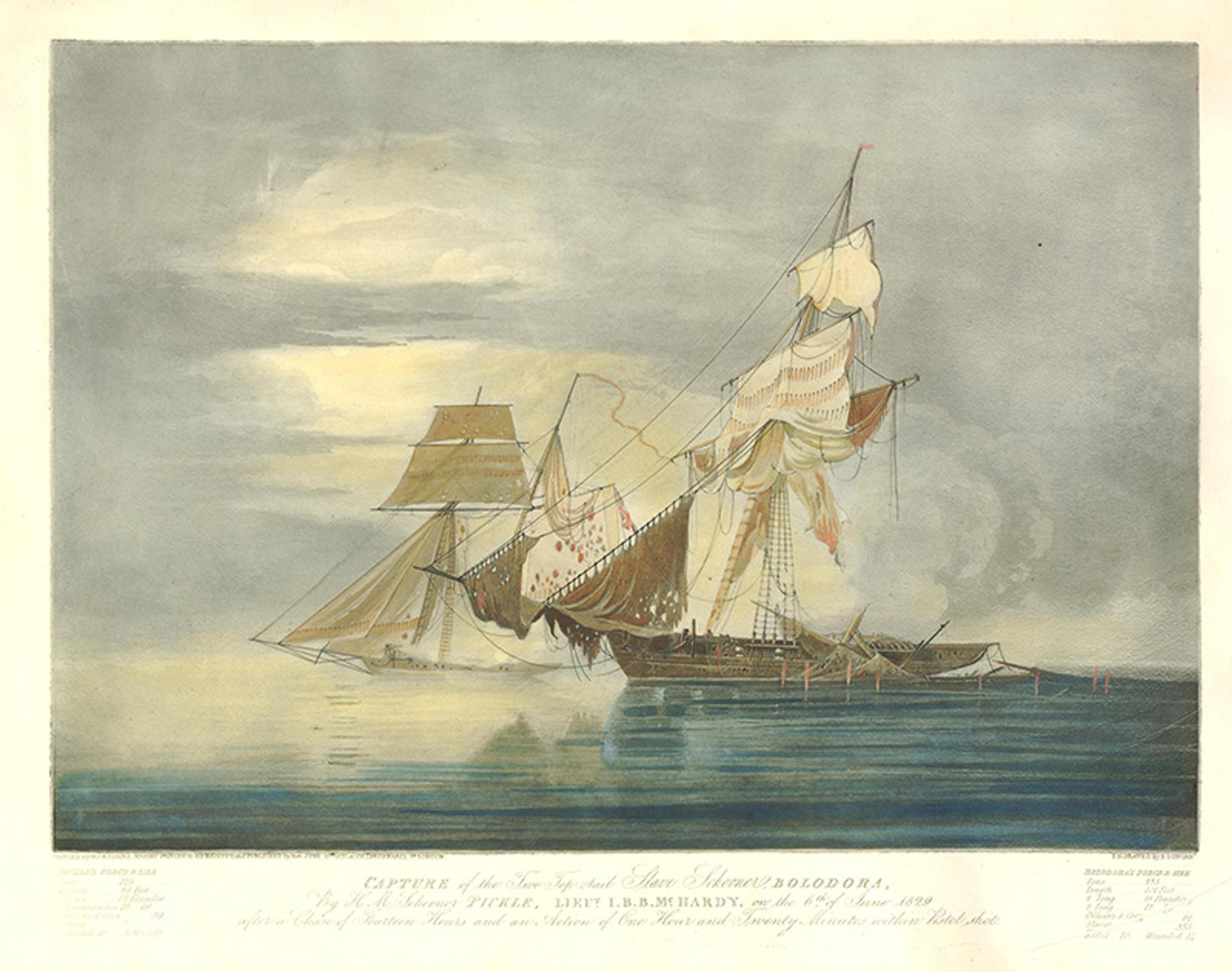
The capture of the Spanish slave ship Bolodora by HMS Pickle (1831). Aquatint by Edward Duncan. Courtesy the Trustees of the British Museum
Fowell Buxton advocated for a larger fleet to interdict slave ships in West African waters. Gunships would not only stop slave ships; they would convince African leaders to sign treaties giving up the slave trade in exchange for commercial preferment. Europe would import finished goods; Africa would grow crops and extract minerals. Africans who might have been sold into slavery would find secure employment and civilisation as wage workers in industries useful to British importers and merchants. ‘The principles, then … are these,’ Buxton wrote: ‘Free Trade. Free Labour.’ In West Africa, forcing open labour and commodity markets in the name of antislavery cut a path for conquest.
In 1851, to secure an antislavery treaty, British warships shelled Lagos, forcing the abdication of the Oba (or ruler), Kosoko. A new Oba, Akitoye, installed by the British, abjured the slave trade and opened the port to British ships – free trade. Meanwhile, at Abeokuta, a town near Lagos, the Church Missionary Society (CMS) established an Industrial Institution to teach cotton cultivation to locals. In partnership with Thomas Clegg, a Manchester cotton merchant, the CMS sent missionaries, of both European and African origin, far and wide with cotton seed, gins, screw presses and other gear. Cotton exports from Lagos rose from 11,492 lbs in 1856 to 220,099 lbs in 1858 – free labour. In 1861, Britain annexed Lagos as a Crown Colony. In 1885, at the Berlin Conference, Britain leveraged its claim on Lagos into possession of the territories that were unified in 1914 as the Protectorate of Nigeria. Antislavery was a natural partner for a global order centred on free-trading, industrial-capitalist Britain. It promised low-cost and highly productive labour from colonial subjects. Since working for wages was inherently civilising, and since low wages encouraged prudence and sobriety, to be exploited was to be educated.
Despite many schemes to grow cotton with free labour within the British Empire, Britain depended on enslaved labourers in American cotton fields. Britain imported about 800 million lbs of cotton every year by the later 1850s, and the US produced fully 77 per cent of it. At the peak of the trade, nearly one in five Britons depended on the cotton supply for their livelihood. Clegg, like many entrepreneurs with antislavery principles, hoped to find a source of cotton made by wage workers sufficient to replace American cotton. The problem was that giving up American cotton would impoverish British workers. As one delegate at the World Anti-Slavery Convention, held in London in 1840, argued, a boycott of slave-made cotton ‘would starve more than one-half of the present inhabitants of this island’. Until the American Civil War, Britain remained the best customer of the US.
In the 19th century, ‘abolitionism’ and ‘antislavery’ were sometimes used interchangeably. What it meant to be either ‘antislavery’ or ‘abolitionist’ shifted over time, and across distance; the terms were rarely neutral. Sometimes ‘abolition’ referred to policy, and ‘antislavery’ to ideology. However, occasionally in Britain and often in the US, the terms were rhetorical opposites. For some American antislavery activists, ‘antislavery’ was a condemnation: ‘antislavery’ was the moderate position, and moderation was cowardice. However, for many white Americans who sympathised with the enslaved but feared either rebellion or a decline in their own quality of life, ‘abolitionist’ was the slur – a synonym for ‘zealot’ or ‘bomb-thrower’. A campaign pamphlet published in 1856 praised Millard Fillmore, the 13th US president, for his ‘noble, moderate, conservative’ positions on slavery. He was hated by ‘the fire-eaters and ultra-pro-slavery men of the South, as an abolitionist, and by the Abolitionists and disunion fanatics of the North as a friend of slavery extension’.
By 1856, moderation on slavery appealed less to American voters than perhaps ever before – Fillmore was crushed at the polls – but his campaign understood that calling someone ‘abolitionist’ could energise the electorate. In the present, abolitionists argue for the end of prisons, for gutting police departments to the studs. The term, when used in this sense, retains what 19th-century radicals wanted from it – uncompromising opposition to the ugly, immoral state of things.
In Britain, the distinctions between ‘abolitionism’ and ‘antislavery’ were less contentious. The campaigns against the slave trade and slavery aligned well with the interests of an industrial and capitalist British Empire. The end of slavery and the beginning of free labour, the leaders of the antislavery movement promised, would secure rebellious Caribbean subjects to British rule. The discipline of wage labour would be a civilising force, teaching thrift and forbearance to people who were believed to be mired in moral and economic depravity. As the Trinidadian historian, later first prime minister of Trinidad and Tobago, Eric Williams argued in Capitalism and Slavery (1944), in the era of abolition, economic conditions favoured cheap, easily exploited wage labour over enslaved labour. Antislavery Britons believed in justice and freedom, and enjoyed how their beliefs made them feel. But what justice and freedom meant, and Britain’s responsibility to carry them around the world by force, if necessary, were shaped by imperial power. The public celebrated. Parliament made the laws, and capital called the tune.
